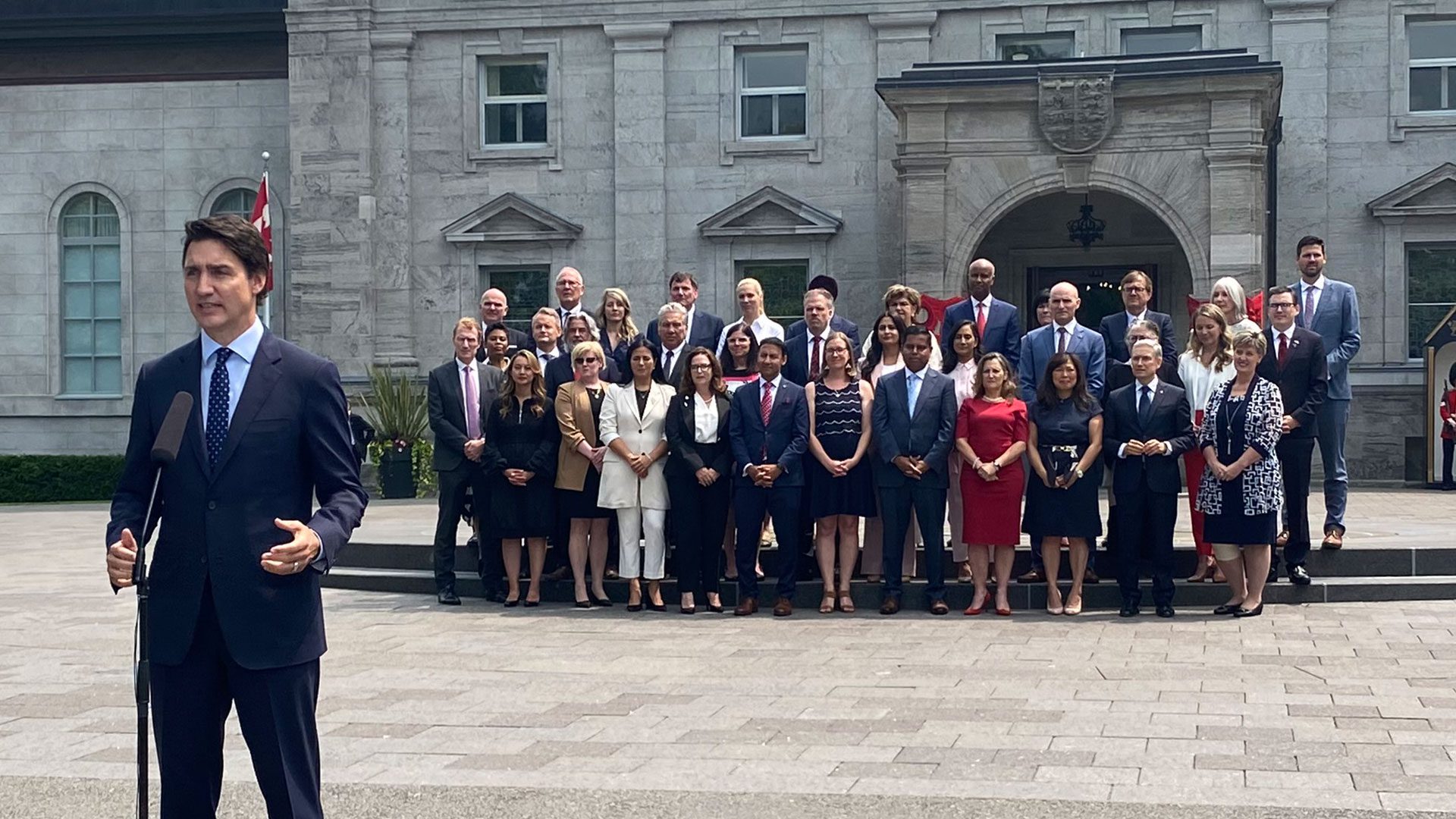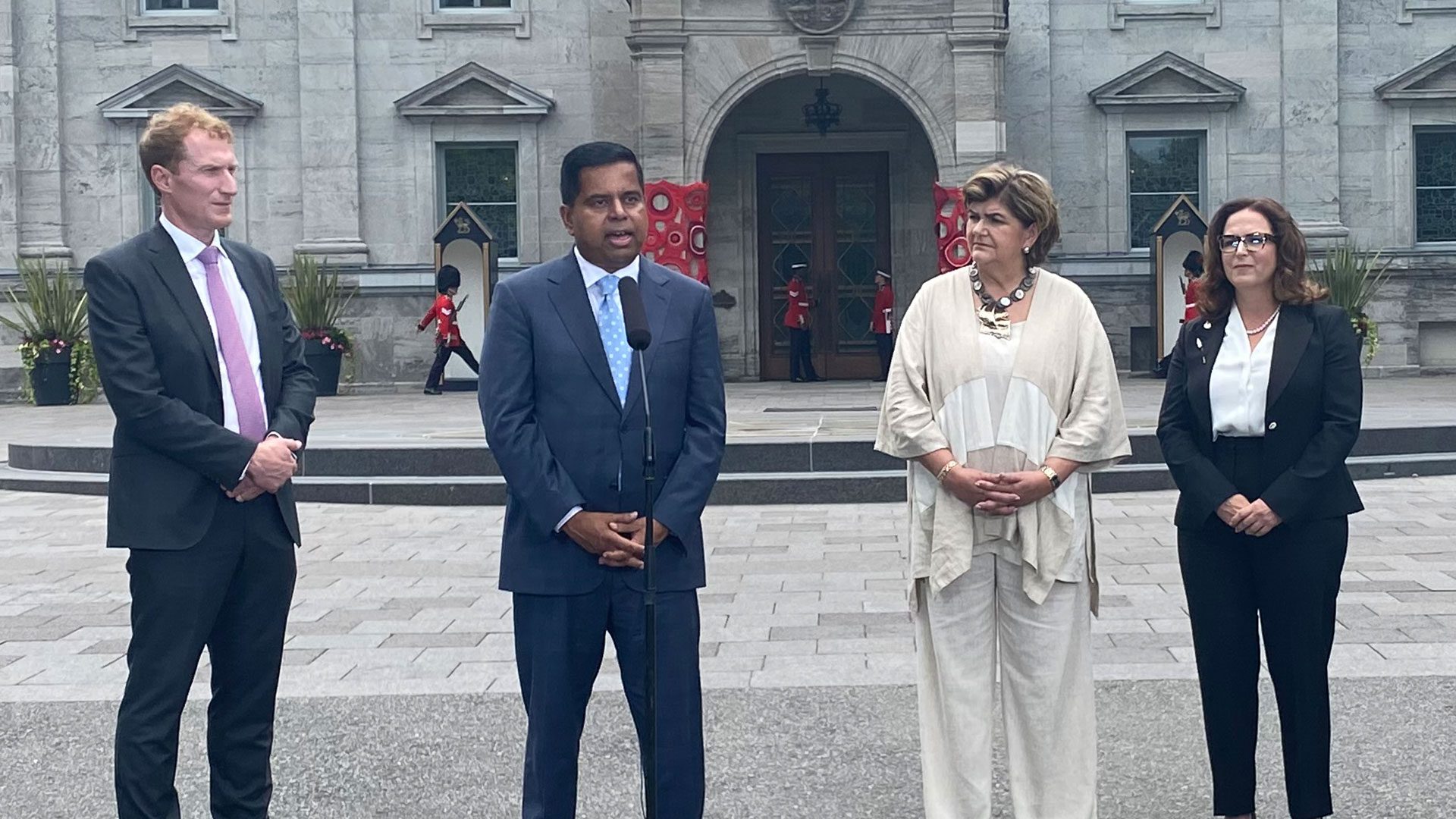The Assembly of Manitoba Chiefs is encouraging the new minister of Crown-Indigenous relations to continue the work of Marc Miller in pushing for the search of the Prairie Green Landfill outside Winnipeg.
“We hope that Minister Gary Anandasangaree can help us and be an ally for MMIWG2S+ and assist us in bringing our loved ones located in the Prairie Green Landfill and the Brady Landfill home,” said Grand Chief Cathy Merrick in a statement after the federal cabinet shuffle was announced.
The bodies of two First Nations women, Morgan Harris and Marcedes Myran, are believed to be buried at the landfill that is located just outside of Winnipeg.
Both the Winnipeg police and the province of Manitoba are refusing to initiate a search saying it’s too involved, dangerous to searchers and without expectation that either of the women will be located.
At a meeting of the Assembly of First Nations, Miller admonished Manitoba Premier Heather Stefanson for not supporting a search saying that the situation had been “dealt with in a very heartless way, quite frankly, and we do absolutely have to try, as a federal government,” he told the Manitoba chiefs.
“What is shitty is we’ve lost the window in this summer to get something done and to get down to business, and actually have a productive working relationship as to how this happens. It’s going to be tricky.”
Merrick said Miller was a supporter whose work “has been appreciated, and his efforts to locate and bring home our Missing and Murdered Indigenous Women, Girls, and 2SLGBTQ+ (MMIWG2S+) community members from the Prairie Green Landfill and the Brady Landfill is acknowledged and respected.”
Following the cabinet shuffle, Anandasangaree told APTN News that the work was “important.”
“For me, on my day one, is to commit to ensuring that we support and get to the bottom of this,” he said. “After the briefings, I will engage with those directly impacted, particularly the families, and ensure that we have a solution that is just and appropriate.”
Anandasangaree is one of seven new ministers sworn in today as part of a major reset to Prime Minister Justin Trudeau’s cabinet.
He represents Scarborough-Rogue Park in the Greater Toronto Area and was first elected in 2015.
The human-rights lawyer previously served as the parliamentary secretary for a previous Crown-Indigenous relations minister, and he sat on the House Indigenous and northern affairs committee for six years.
Miller is taking on a new role as the immigration minister.
According to the NDP, Anandasangaree has a “monumental task” ahead of him as communities look for help with climate change, harmonizing Canada’s laws with the United Nations Declaration on the Rights of Indigenous Peoples and the MMIWG inquiry’s calls for justice.
“This Liberal government has broken far too many promises to Inuit, First Nations and Métis,” said NDP MP Lori Idlout who represents Nunavut and is the Crown-Indigenous relations critic. “Another restart on the Crown-Indigenous Relations portfolio must see changes towards improvements.”
New cabinet shifting focus to the economy, housing ahead of next election

The cabinet shuffle announced Wednesday was significant and appears to be signalling that the federal government will focus on housing and affordability heading into the next election which is scheduled for 2025.
About three-quarters of cabinet portfolios have switched hands. Five of the new ministers represent constituencies in Ontario, one is from British Columbia and one from Quebec.
The Liberal government is selling the reset as a renewal that centres on the middle class, growing the economy and creating jobs.
During a press conference with reporters after a swearing-in ceremony for the new ministers, Trudeau said his government has had to navigate difficult global events.
The war in Ukraine led to a rise in fuel and food prices, while Canada, Trudeau said, has also had to respond to the backsliding of democracy abroad and foreign interference attempts at home.
Trudeau said there’s potential for a global economic slowdown, as inflation remains high along with interest rates rising around the world. Canada’s inflation rate fell to 2.8 per cent in June, and as Finance Minister Chrystia Freeland has boasted, that’s the lowest inflation rate in the G7.
“The fact that Canada is better off than many countries in the world doesn’t make it any less difficult for the millions of Canadians who are struggling,” Trudeau said.
He said his cabinet, full of “fresh energy,” will bring new voices, skills and experiences to the table in order to get Canadians through the global challenges.
There are 38 people in the cabinet, including Trudeau, and half of them are women.
All of them, except a few ministers who were not in Ottawa on Wednesday, were expected to join a cabinet meeting in the afternoon following the swearing-in ceremony at Rideau Hall and an extended press conference.
Wednesday’s shuffle is seen, in part, as a way for the Liberal government to respond to pressure from opposition parties and signal that they deserve to stay in government to tackle the country’s most pressing issues.
Many observers have said it’s time for the nearly eight-year-old Liberal government to renew its vision.
“It’s an aging government that’s shaking in the polls,” said Jonathan Malloy, a political science professor at Carlton University.
It’s not unusual for a government that is halfway through its mandate to have a cabinet overhaul, Malloy said.
But it’s clear that Trudeau intended to drop ministers who were not perceived to be performing well in favour of fresh faces, he added.
The next federal election must take place by October 2025, but it could be called well before then.
While Trudeau didn’t shy away from removing or demoting ministers from high-profile portfolios, he wouldn’t offer much detail on the reasons for removing several of them from cabinet, including ex-justice minister David Lametti and ex-Treasury Board president Mona Fortier.
Arif Virani is joining the front bench as justice minister and Attorney General, replacing Lametti, who said in a statement posted to Twitter that the job had been “the privilege of my life.”
Anita Anand, who has led Canada’s response to the Russian invasion of Ukraine, is leaving the defence portfolio to become president of the Treasury Board. Bill Blair, who was most recently in charge of emergency services, is taking over her former job.
Dominic LeBlanc is adding public safety to his intergovernmental affairs portfolio, replacing Marco Mendicino, who has been booted from the cabinet altogether.
Mendicino had been dogged by controversy over his handling of the prison transfer of serial killer Paul Bernardo, challenges bringing in new gun-control legislation and making progress on the Nova Scotia Mass Casualty Commission’s report, which called for an overhaul of the RCMP.
As LeBlanc picks up the pieces of those files, he will also still be tasked with negotiating the terms of a possible public inquiry into foreign interference.
The high-profile changes indicate the shuffle is as much about national security as it is about the economy, Malloy said.
Former immigration minister Sean Fraser is in a new role that sees the government’s housing agenda combined with the infrastructure file. Marc Miller, who was the minister for Crown-Indigenous relations, is taking on immigration.
Mark Holland, who was the government House leader, is taking on the health portfolio, while former Jean-Yves Duclos moves to public services and procurement. Karina Gould, the former families minister, will be the new House leader.
The other new ministers are Gary Anandasangaree, who takes over Crown-Indigenous Relations; Terry Beech, who is in a new portfolio called Citizens’ Services; Tourism Minister Soraya Martinez Ferrada; Mental Health and Addictions Minister Ya’ara Saks; Families Minister Jenna Sudds and Small Business Minister Rechie Valdez.
Only seven ministers have kept their portfolios: Finance Minister Chrystia Freeland, Industry Minister Francois-Philippe Champagne, Environment Minister Steven Guilbeault, Indigenous Services Minister Patty Hajdu, Women and Gender Equality Minister Marci Ien and Foreign Affairs Minister Melanie Joly.

Cabinet ministers and their titles:
Anita Anand: president of the Treasury Board
Gary Anandasangaree: minister of Crown-Indigenous relations
Terry Beech: minister of citizens’ services
Francois-Philippe Champagne, minister of innovation, science and industry
Marie-Claude Bibeau: minister of national revenue
Bill Blair: minister of national defence
Randy Boissonnault: minister of employment, workforce development and official languages
Jean-Yves Duclos: minister of public services and procurement
Soraya Martinez Ferrada: minister of tourism and minister responsible for the Economic Development Agency of Canada for the Regions of Quebec
Sean Fraser: minister of housing, infrastructure and communities
Chrystia Freeland, deputy prime minister and minister of finance
Karina Gould: government House leader
Steven Guilbeault: minister of environment and climate change
Patty Hajdu: minister of Indigenous services and minister responsible for the Federal Economic Development Agency for Northern Ontario
Mark Holland: minister of health
Ahmed Hussen: minister of international development
Gudie Hutchings: minister of rural economic development and minister responsible for the Atlantic Canada Opportunities Agency
Marci Ien: minister for women and gender equality and youth
Melanie Joly: minister of foreign affairs
Kamal Khera: minister of diversity, inclusion and persons with disabilities
Dominic LeBlanc: minister of public safety, democratic institutions and intergovernmental affairs
Diane Lebouthillier: minister of fisheries, oceans and the Canadian Coast Guard
Lawrence MacAulay: minister of agriculture and agri-food
Marc Miller: minister of immigration, refugees and citizenship
Mary Ng: minister of export promotion, international trade and economic development
Seamus O’Regan Jr.: minister of labour and seniors
Ginette Petitpas Taylor: minister of veterans affairs and associate minister of national defence
Carla Qualtrough: minister of sport and physical activity
Pablo Rodriguez: minister of transport and Quebec lieutenant
Harjit Sajjan: president of the King’s Privy Council for Canada, minister of emergency preparedness and minister responsible for the Pacific Economic Development Agency of Canada
Ya’ara Saks: minister of mental health and addictions and associate minister of health
Jenna Sudds: minister of families, children and social development
Pascale St-Onge: minister of Canadian heritage
Filomena Tassi: minister responsible for the Federal Economic DevelopmentAgency for Southern Ontario
Rechie Valdez: minister of small business
Arif Virani: minister of justice and Attorney General of Canada
Jonathan Wilkinson: minister of energy and natural resources









